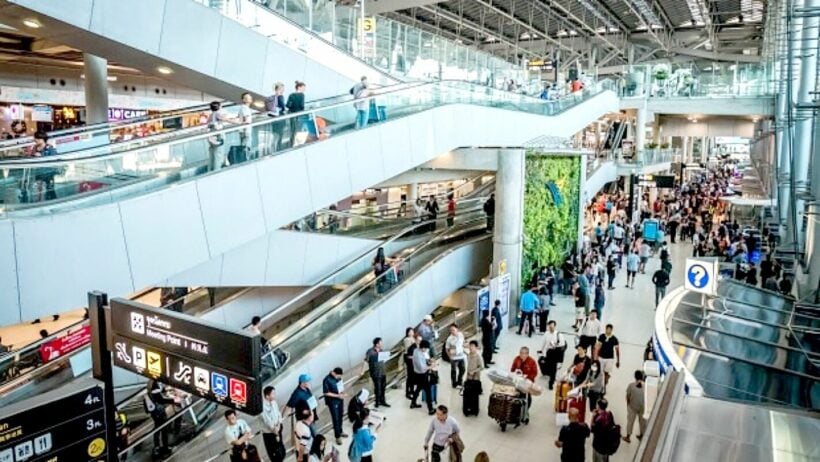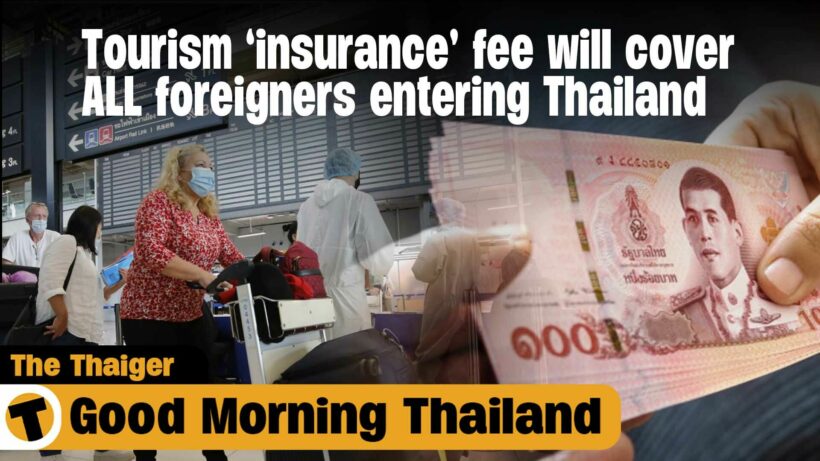July 1 – Thailand more open than ever

OPINION
On July 1, Thailand will be more open that it’s been since April 2020 when the boom gates first came down on the borders, locking out international travel. Since then it’s been a tedious and drawn out lessening of restrictions, with a few stumbles on the way.
That finishes in just 11 days time as the country rids itself of both the red-tape barrier, the Thailand Pass, but also the mental barrier for many tourists and travellers. The pre-travel digital gateway, launched in November 1 last year, will be gone in a victory for Thailand’s battered tourism and hospitality industry.
But, actually, it’s even better because they’re getting rid of the TM6 form as well, at least in the short-term although many believe it’s probably going to become permanent. The TM6, a throwback to a pre-digital travel era, now serves little use.
The only remaining hurdle for travellers coming back to Thailand is a pre-travel test for unvaccinated travellers. Or if they choose not to have a test before travel, an ATK test on arrival when they get to Thailand (which only takes 15 minutes for a result). The details about whether the arrival test will be random or mandated, or if some airlines will allow unvaccinated, untested people on their planes in the first place, is yet to be sorted out. It also needs to be clarified what happens to foreigners arriving in Thailand who test positive in the post-July 1 era.
Post July 1, the country’s tourism officials are hoping the arrival numbers will steadily increase. By the end of the year they’re expecting tourist arrivals to reach around 40% of pre-Covid travel numbers.
But who is going to be packing their bathers, sun cream and travel guide and heading to Thailand?
Certainly not the Chinese. The country’s zero Covid strategy is not only locking down China’s largest cities, it’s also a guarantee that China’s borders are going to be closed for inbound and outbound travel for at least the short to medium term.
And Russia’s ongoing war with Ukraine has effectively closed off the supply of Russian travellers to Thailand at this time. Even if the war is over this year, there will be a long hangover from the conflict which is going to subdue Russian outbound tourism for an extended period.
So that’s two of Thailand’s biggest feeder markets out of the equation for a while.
And there are plenty of other headwinds that will delay a resumption of travel to Thailand – rising inflation and recessionary storm clouds in many of Thailand’s feeder markets, world airlines in distress with fewer flights and higher seat prices, and higher fuel prices.
At the moment the highest number of tourists to Thailand are coming from India and Malaysia. India because of its close proximity and growing middle class. And Malaysia, partly because of the reopening of Thailand’s southern border checkpoint and a resumption of local trade and daily travel in the border region.
Short haul travel, around the world, will certainly be a common thread in the next few years as people travel less, and in closer proximity to their homes. The days of mass long-haul, budget travel are still many years down the track as we wait for better economic circumstances, and airlines rejigging their fleets to align with the new travel patterns.
Whilst Thailand’s past mass tourism model may have served it well, there will be a different range of tourists heading to the Land of Smiles in the future.
One of the neglected sectors is the long-stay crowd. With an acceleration towards remote work and western economys’ rising cost of living, Thailand becomes very attractive as a destination for both remote work and long-term living. For example, the cost of retiring in Thailand is much, much more affordable.
For now, both ‘digital nomad’ visas and ‘retirement’ visas are expensive and targeted. This is an area where Thailand could really cash in as the preferred country for remote workers, retirees and long-term stayers – people that don’t come and spend for a week or two, but 365 days a year. You can check out the Thailand Elite Visa option HERE.
With the TM6 form on the way out, there is also talk of abolishing the 90 day reporting, another annoyance for people on long-stay visas. After switching to a digital arrival paradigm during Covid 19, Thailand has the capabilities to switch to a largely paperless immigration experience for all foreigners visiting Thailand.
But we’re getting ahead of ourselves.
From July 1 there will be no Thailand Pass, no compulsory $US10,000 insurance, an extension of closing times for the country’s colourful nightlife (officially to 2am), no TM6 and those infrared scanners at doorways disappearing (where will they all go?)
And face masks will no longer be required in open spaces – that’s yet to be fleshed out since last Friday’s announcements but you can guarantee that we’ll be seeing a lot fewer face masks in the future and they will become a voluntary accessory.
Whilst there’s been barriers for some people to return to Thailand over the past 8 months, after July 1 all those barriers are gone, and the TM6 form has gone as well.
So what’s stopping you? We look forward to hearing your discussion on the Thaiger Talk forum (below)…
Latest Thailand News
Follow The Thaiger on Google News:


























